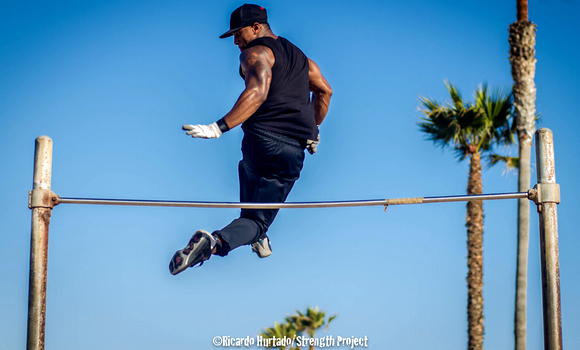
By: Sarah McWilliams
Every year over 160,000 people head to Louisville, Kentucky donned in the their most dapper apparel for the Kentucky Derby. While people sip on their Mint Juleps and place their bets, very little thought is given to the jockeys – who just may be the top athletes in attendance, even though household names such as Tom Brady, Scottie Pippen and many others regularly attend the Derby. In fact, pound for pound, jockeys are some of the fittest athletes in any sport.
Becoming a professional jockey takes a lot of hard work, training and genetics. It takes a special athlete to be that small – jockeys are typically within the 110-pound weight range – while still exhibiting the supreme strength to control such a powerful animal. This is a punishing profession that requires strict, often six-day training weeks.
An example of a typical jockey training program would include 2.5 hours of riding per day, 150 miles of cycling to increase his or her endurance (many jockeys have taken to boxing to gain a conditioning and coordination edge), and then some type of strength training four times per week. Jockeys also must also include balance training into their workouts, because as you can imagine, when you’re riding a horse going some 40 mph, having balance is incredibly important. Many jockeys will practice on an electronic horse when they’re not actually on the track.
Most jockeys start at a very young age. It’s not enough to be able to ride a horse; a jockey has to be able to understand how a horse thinks, and be able to predict a horse’s actions. Most colleges in the United States don’t offer training programs for jockeys, however the North American Racing Academy offers a two-year program to train as a jockey. It’s not the only path to become a professional jockey, but it does offer valuable training not easily available in the United States.
Most jockeys get into their sport for the love of horses, riding and racing, but it can also be profitable as well, at least if you’re the winner. Most jockeys have mount fees, which is a fee for every time they hop on their horse, that usually equals $30 to $100. The first place jockey will then typically receive 10 percent of the prize money. For example, at this past Kentucky Derby, California Chrome won over $1.4 million. Therefore the jockey took home $140,000 plus his mount fee.

This is not typical money in the world of horse racing, however. The vast majority of jockeys are not riding at the Kentucky Derby for million-dollar purses, but rather, at local and regional tracks where payouts can sometimes only net you a couple hundred bucks – and that’s if you happen to win. Very few jockeys are getting anything close to rich.
There is also a dark side to being a jockey. Injuries, sometimes very serious injuries, are quite common in the industry. Racehorses often weigh in excess of 1,000 pounds and are extremely powerful and can be unpredictable. A few weeks back a jockey was thrown from his horse during a race when his horse clipped the heels of another horse. The jockey was hospitalized with a bruised hip. Earlier this summer Jockey Rajiv Maragh fared even worse when another horse clipped his horse’s heels. Maragh was unseated from his horse, falling and breaking his arm in the process. Maragh underwent surgery so doctors could install plates and screws in his arm.
Also, because of the strict guidelines for weight imposed on jockeys, it’s common practice for jockeys to go to extreme measures to ensure they are under weight. In 1995 a study by the Chicago Rehabilitation Institute found that 66 percent of jockeys used saunas to lose weight, almost 70 percent purposely skipped meals, over 30 percent used water pills, and 14 percent admitted to using laxatives.
It used to be common to see “flipping bowls” at every race track. These bowls were available for jockeys to purge themselves to make weight. This past Derby marks the 10th year since the flipping bowls were removed from the track, but that doesn’t necessarily mean the practice was removed. Other tracks still have the bowls, which are typically taller so they aren’t forced to kneel while purging.
Former Professional Jockey Darrell Haire told Fox Latino, “Whether it’s a toilet or a heaving bowl, it’s still there.”
There have been changes made to the rules to discourage this type of practice, which is dangerous for many reasons. Excessive purging can lead to osteoporosis, tooth decay, dehydration and low body temperature. It may also give the person a feeling of weakness and lightheadedness, which can be dangerous for someone who is about to climb on a horse and race.
Most people get so consumed by the horses and the energy of the race, they forget that there are some of the best athletes in the world in at least partial control of whether you will have the winning ticket that day.
 ATLX The only sports entertainment television and digital media network fully devoted to everyday athletes, athletic lifestyle and athletic culture.
ATLX The only sports entertainment television and digital media network fully devoted to everyday athletes, athletic lifestyle and athletic culture.




